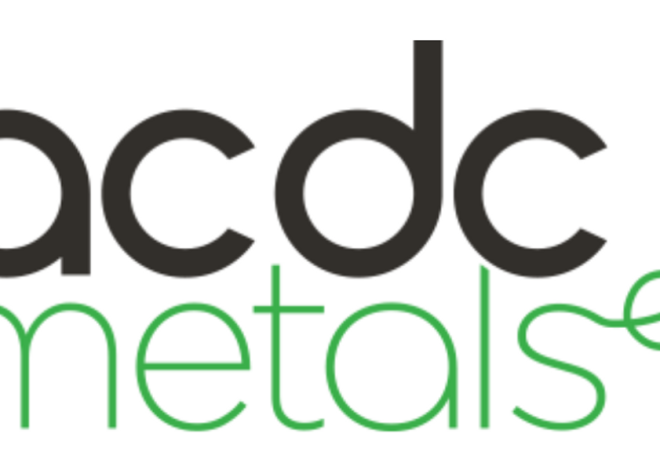![What Is Actual Property Syndication? [101 Guide]](https://fccrypto.site/wp-content/uploads/2025/07/Understanding-Real-Estate-Syndications-FB.png)
What Is Actual Property Syndication? [101 Guide]
 By Dr. Jim Dahle, WCI Founder
By Dr. Jim Dahle, WCI FounderAn actual property syndication is an illiquid however passive means for accredited buyers to spend money on actual property. As a syndication investor, you will not be getting 3am bathroom calls, and you’ll by no means have to speak to a tenant. You do not even must ever lay eyes on the property. When you make the choice to speculate, your function within the funding will likely be restricted to cashing the checks despatched to you by the syndication. Who would not need mailbox cash?
Whereas a syndication may be finished with as few as two buyers, a way more frequent construction is the standard authorized most of 99 buyers. Like with a mutual fund, the buyers have banded collectively to allow some economies of scale, to rent skilled administration, and to accumulate bigger and extra worthwhile properties than they may afford by investing alone.
A typical property could be a $15 million condo advanced. If every of the 99 buyers contributes $50,000 in capital, the syndication can have about $5 million in fairness. The syndication will then borrow one other $10 million and buy the property. The syndication might renovate the flats over 1-2 years (a “value-add” technique), renting them out for greater rents after renovation and thus rising the worth of the property. The buyers will obtain revenue funds each quarter, after which after 5 or 10 years, the syndication will promote the property and the buyers will obtain a verify for his or her share of the proceeds.
If the marketing strategy went as anticipated, that verify will embody a pleasant revenue on the funding.
The Enterprise Construction of Actual Property Syndications
Most syndications are arrange as restricted partnerships or restricted legal responsibility firms. The individual in command of the syndication is usually known as the final associate (GP), operator, or sponsor. The buyers are often known as restricted companions (LPs), members, or buyers. The GP usually should signal personally for any loans on the property, and, thus, they’ve an elevated diploma of danger in comparison with the LPs. Whereas the LPs can (and infrequently do) lose their complete funding, their loss is proscribed to the quantity of capital they’ve invested.
Whereas a syndication in bother will usually have a “capital name” asking the buyers to contribute extra capital, there is no such thing as a requirement to take action. Nevertheless, if an LP refuses, their share of the enterprise could also be diluted, and if sufficient LPs refuse, the property could also be foreclosed on—and all the capital could also be misplaced.
GPs usually have some “pores and skin within the sport,” and, so, are additionally LPs within the syndication. Along with their share of the income as an LP, they’re entitled to charges for his or her efforts and the extra stage of danger because the GP. A typical payment construction can be 1% a 12 months of the fairness plus 20% of the general returns above and past a sure “most well-liked return,” reminiscent of 6% per 12 months. This portion of their charges is known as the “promote” or “carried curiosity.” If the GP can be the property supervisor, they might cost charges for that.
Rules of Actual Property Syndications
In response to the Nice Melancholy, quite a few vital investing legal guidelines have been handed, together with the Securities Act of 1933. Previous to that point, an actual property entrepreneur had only a few rules governing their skill to market a property to potential buyers. Beginning in 1933, all new funding choices needed to be registered with the Securities and Trade Fee (SEC). The thought was to forestall fraud, however this extra stage of regulation definitely put a damper on the flexibility to essentially kind syndications.
Nevertheless, there was an exception.
If you happen to raised the capital by personal solicitations from folks you had a beforehand present relationship with, you didn’t must undergo the costly, time-consuming, and onerous strategy of registration. Mainly, you simply could not promote these alternatives. One needed to study them by phrase of mouth (the onerous half) and set up a relationship with the sponsor (the simple half). Then, one may make investments. The JOBS Act of 2012 relaxed these registrations to the purpose the place syndicators may promote their investments however solely to accredited buyers. As a normal rule, the authorized definition of an accredited investor is somebody with an revenue of at the very least $200,000 a 12 months for every of the final two years (or $300,000 a 12 months mixed with a partner) or investable belongings of at the very least $1 million. These quantities haven’t been adjusted for inflation for a few years.
Rules apart, my definition of an accredited investor is somebody who can consider the deserves of an funding on their very own with out the help of a monetary advisor, accountant, or legal professional, they usually can afford to lose their complete funding with out it affecting how they reside their monetary life in any important means. I additionally counsel folks not solely meet each of the monetary standards however double every of them. With investable belongings of at the very least $2 million AND an revenue of at the very least $400,000, will probably be a lot simpler to diversify a portfolio of personal syndications the place you can lose $100,000 in a syndication with no important impact in your monetary life.
Syndicated investments are sometimes known as “Reg D Choices,” after Regulation D of the 1933 Securities Act. Guidelines 504 and 506 are those that typically apply, particularly 506(b) and 506(c). Beneath 506(b), an funding might have a limiteless variety of accredited buyers and as much as 35 refined, non-accredited buyers however can not promote. Beneath 506(c), an funding could also be marketed, however all buyers have to be accredited.
There may be one other vital piece of laws that impacts personal funding firms: the Funding Firm Act of 1940. Beneath rule 3(c)(1), an organization that has not more than 100 accredited buyers (the 99 investor rule) is allowed to sidestep sure disclosure and registration necessities. Beneath rule 3(c)(7), an organization that has not more than 2,000 certified purchasers can even side-step these necessities. Nevertheless, certified purchasers are typically considerably wealthier than accredited buyers ($5 million vs. $1 million), and so most syndications comply with the 99 investor rule for ease of administration.
Some personal investments, notably massive evergreen funds, merely elect to register with the SEC to get across the 99 and a pair of,000 investor guidelines. Whereas there’s some extra expense and trouble, the flexibility to boost cash from extra buyers and promote to get them makes it price it. These funds usually nonetheless require accredited investor standing and infrequently require certified purchaser standing.
How a Syndication Differs from Different Non-public Investments
Different personal investments could also be marketed as a fund or as a Actual Property Funding Belief (REIT). A fund is solely a number of syndications (reminiscent of 10-20) all positioned into the identical funding. Like syndications, these are normally restricted partnerships or restricted legal responsibility firms; they simply personal multiple property. Traders are additionally usually requested to speculate earlier than they know which properties the fund will likely be buying. With a fund, you could have a recognized supervisor however unknown properties. One purpose buyers select particular person syndications over funds is that it permits them to know precisely what they’re buying upfront.
A REIT is a selected authorized construction. Relatively than sending its buyers a Ok-1 tax kind every year, like a partnership, a REIT sends a 1099-DIV tax kind. Whereas this makes it troublesome for buyers to make use of depreciation from this funding towards passive revenue from different investments, it dramatically simplifies tax submitting, since there will not be a requirement to file taxes in different states. Consider a REIT as a fund with a unique authorized construction, though many funds have elected to construction themselves as a REIT for tax functions. Most publicly traded actual property firms are structured as REITs, however not all REITs are publicly traded. Publicly traded REITs are sometimes grouped collectively into mutual funds, offering simple diversification and liquidity. REITs, notably publicly traded REITS, are dramatically extra liquid than syndications.
What Are the Largest Advantages of a Actual Property Syndication?
The principle advantages of syndicated investments embody:
- Entry to bigger, probably extra worthwhile properties.
- The power to research the property earlier than the acquisition.
- Go-thru depreciation.
- Low correlation with general markets.
- Passive revenue.
- Potential to do a 1031 change to defer depreciation recapture and capital beneficial properties.
What Are the Largest Downsides of a Syndicated Funding?
The principle drawbacks of a syndication embody:
- Illiquidity: You might not have entry to your cash for a few years.
- Leverage: Nearly all syndicated actual property investments are considerably leveraged, and poor administration can lead to a whole lack of capital.
- Lack of diversification: Your complete funding is usually in a single property; nevertheless, by teaming up with different buyers, you may personal small items of a number of syndications fairly than placing all your cash into one massive property that you just personal by your self.
- Charges: To incentivize the GP to do the work and tackle extra danger, they have to be well-compensated, and people charges should, by necessity, come from the LP returns.
- Lack of management: The GP holds all of the strings and decides find out how to run the property and when to promote it, it doesn’t matter what the tax penalties to the LPs could be. When you make investments, you’re alongside for the experience for a number of years.
How Do Actual Property Syndications Make Cash?
The principle means {that a} syndication makes cash is similar means that any actual property funding makes cash. It generates revenue by rents, and it appreciates in worth. When leverage is used, the paydown of the mortgage produces a further supply of return. The tax advantages (depreciation largely) can even considerably improve the investor’s after-tax return.
Given the illiquidity, lack of diversification, and leverage, most syndications should undertaking returns of 12%-18% to draw buyers. Carried out nicely, they usually obtain these returns, and, in a good macroeconomic setting, they will even exceed these returns. Nevertheless, syndications usually underperform the rosy pro-forma produced by GPs attempting to boost cash. Run poorly, syndications may even produce a complete lack of capital because of leverage. Non-public investments are additionally fertile floor for incompetent, rank freshmen and even fraudsters. Like all the pieces else in investing, greater returns are typically correlated with greater ranges of danger. In order for you 15% returns, the fee is the potential to lose all of it.
Syndications could be a worthwhile solution to make investments a portion of your actual property portfolio. Nevertheless, they’ve important downsides that have to be understood previous to investing. Be an actual accredited investor, not only one who meets the authorized definition of 1, should you select to speculate.
Inquisitive about exploring personal actual property investing? Be certain that to enroll in the free White Coat Investor Actual Property Publication that will provide you with vital ideas for investing on this worthwhile asset class whereas additionally alerting you to new alternatives. Be certain that to begin your due diligence with those that assist The White Coat Investor website:
Featured Actual Property Companions

DLP Capital
Sort of Providing:
Fund
Main Focus:
Multi-Household
Minimal Funding:
$100,000
12 months Based:
2006

Southern Impression Properties
Sort of Providing:
Turnkey
Main Focus:
Single Household / Multi-Household
Minimal Funding:
$80,000
12 months Based:
2017

Wellings Capital
Sort of Providing:
Fund
Main Focus:
Self-Storage / Cellular Properties
Minimal Funding:
$50,000
12 months Based:
2015

MLG Capital
Sort of Providing:
Fund
Main Focus:
Multi-Household
Minimal Funding:
$50,000
12 months Based:
1987

Mortar Group
Sort of Providing:
Syndication
Main Focus:
Multi-Household
Minimal Funding:
$50,000
12 months Based:
2001

EquityMultiple
Sort of Providing:
Platform
Main Focus:
Multi-Household / Industrial
Minimal Funding:
$5,000
12 months Based:
2015

Black Swan Actual Property
Sort of Providing:
Fund
Main Focus:
Multi-Household
Minimal Funding:
$25,000
12 months Based:
2011
* Please think about this an introduction to those firms and never a advice. It’s best to do your individual due diligence on any funding earlier than investing. Most of those alternatives require accredited investor standing.
Have you considered investing in an actual property syndication? If you happen to’ve finished it earlier than, what was your expertise like? Would you do it once more?
[This updated post was originally published in 2022.]






